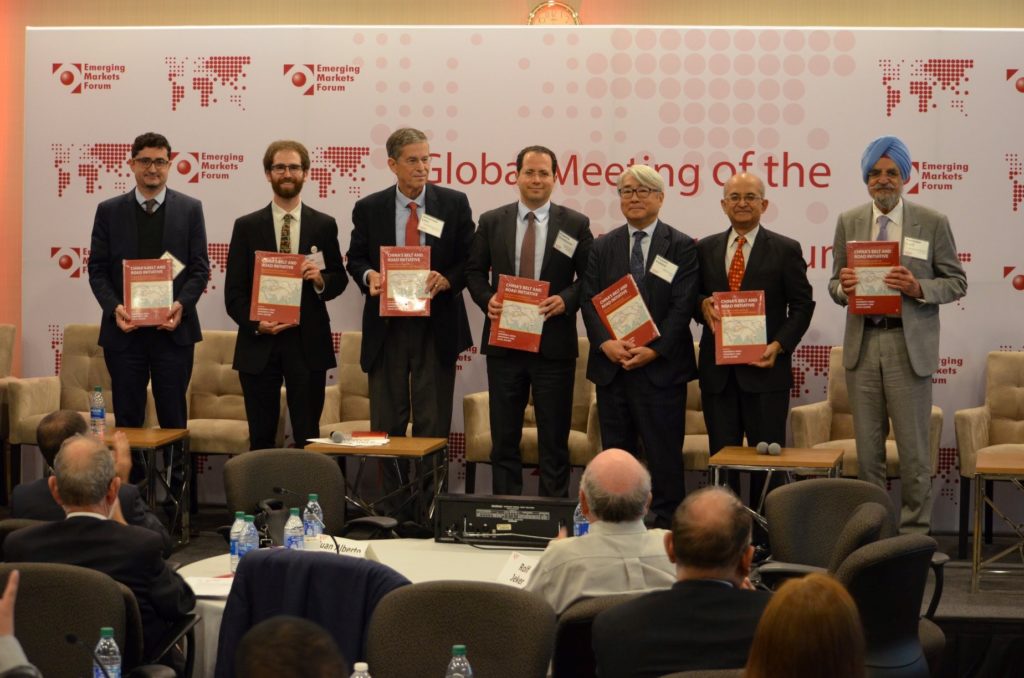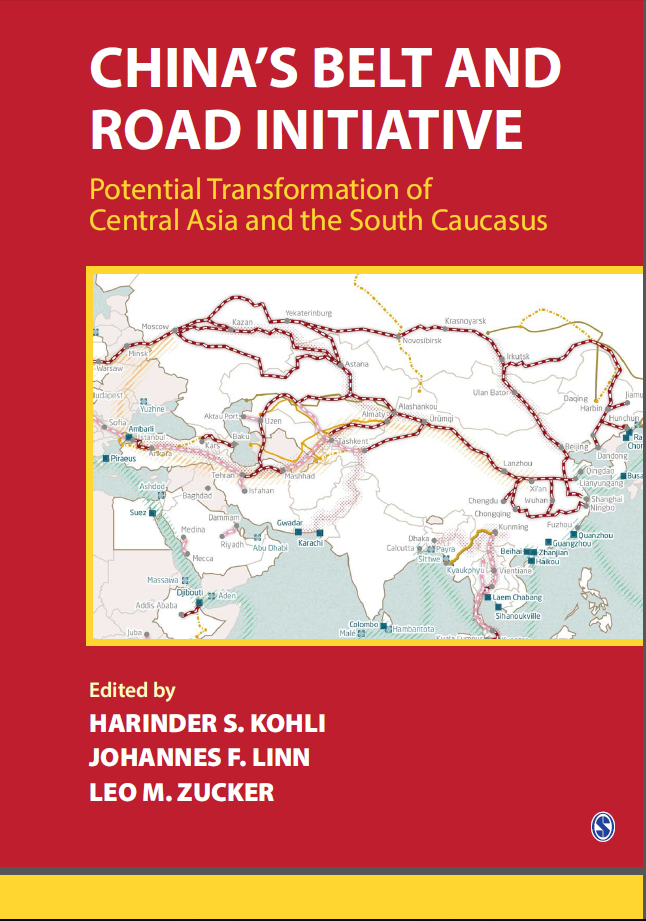The Belt and Road Initiative: A Russian Perspective
Vinokurov E. (2019) The Belt and Road Initiative: A Russian Perspective. In: Kohli, H., Linn, J., Zucker L. (eds.) China's Belt and Road Initiative: Potential Transformation of Central Asia and the South Caucasus. Sage: Los Angeles, New Dehli, Melbourne.
A Book on the Belt and Road Initiative in Central Asia and the Caucasus has been published
132 countries that are partners to the Belt and Road Initiative (BRI) account for 35% of global GDP, 43% of the global trade in goods, and 60% of the world’s population. As of mid-2019, the amount of disbursed FDI approximated $100 billion, and committed and disbursed loans reached $600 billion. The book emphasises the need to maintain fiscal and debt sustainability, assess social impact, minimise environmental risks, and improve transparency.
Evgeny Vinokurov, Chief Economist at the Eurasian Fund for Stabilization and Development, co-authored the book entitled China’s Belt and Road Initiative: Potential Transformation of Central Asia and the South Caucasus. Co-edited by Harinder Kohli, Johannes Linn, and Leo Zucker, the publication was launched at the Global Meeting of the Emerging Markets Forum attended by heads of the Asian Development Bank, the Asian Infrastructure Investment Bank, and the European Bank for Reconstruction and Development.
The contributors to the book are researchers from 11 countries. Over the period of work on this publication, dozens of papers were prepared and a host of public events took place. The special features of this research project is a weighted approach to the achievements and challenges associated with BRI implementation in Central Asian and Caucasian countries, as well as the ‘inside out’ approach involving experts from all countries of the region.
The book provides a qualitative assessment of infrastructure investment made as part of the BRI, as well as of volumes and disbursements. The amount of disbursed FDI approximates $100 bln, and that of committed and disbursed loans $600 bln. Loans to low-income and lower-middle income countries are often concessional. E.g. in Kyrgyzstan and Tajikistan, a typical repayment period of around 20 years, an effective interest rate of 2% per annum, and a grace period of 5-12 years.
The book also provides a qualitative analysis of major BRI projects’ effects on involved countries in terms of economic development, as well as debt and fiscal sustainability.
As for the BRI impact on regional economies, it was noted at the presentation that “the glass is 75% full, but there’s more to fill.” The key drivers are the reduction of transport costs and the intensification of mutual trade. Despite the prevailing share of debt instruments, there’s a simultaneous increase in transboundary direct and portfolio investment in industry, energy and electric power, agriculture, and tourism.
However, the authors are concerned with the countries’ debt and fiscal sustainability. Many of these countries are low and lower-middle income economies with unstable economic growth. For this reason, the authors support China’s plans announced at the Second Belt and Road Forum in Beijing in April 2019 to analyse debt sustainability of each country in cooperation with international financial institutions.
Project experts call for greater transparency of financial flows within the BRI. In addition, the international team of authors emphasise the need to assess more thoroughly the potential demand for infrastructure, as well as social impact and environmental risks. In this connection, they praise China’s intent to multilateralise the BRI by establishing a technical centre with the involvement of major international financial institutions.

Some of the project materials are available here.
